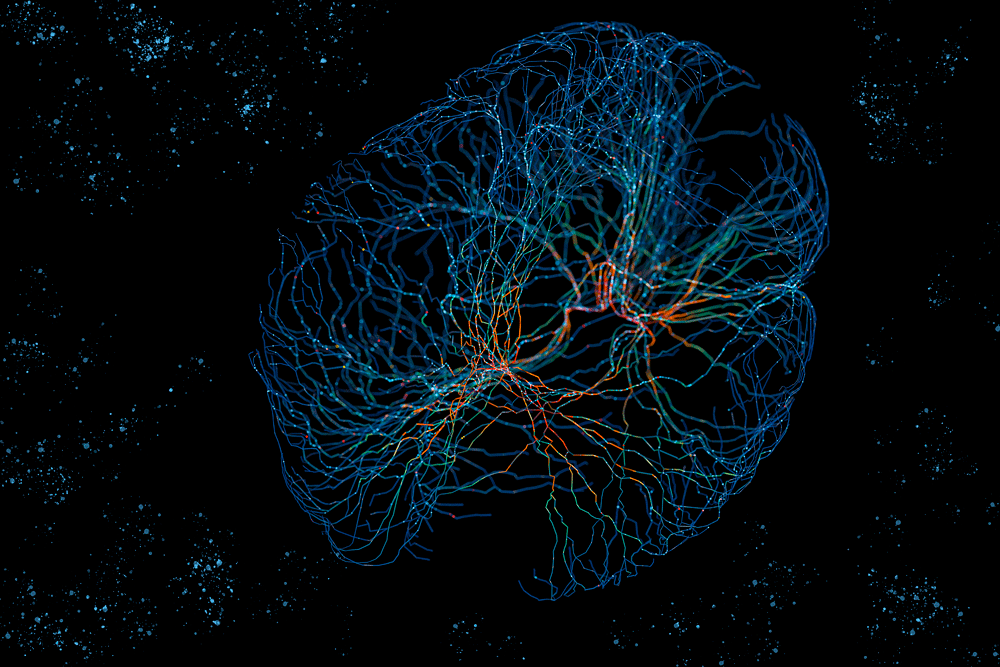The rapid evolution of large language models (LLMs) has ushered in an era where machines can not only generate coherent and contextually rich text but also perform reasoning, dialogue, and domain-specific tasks with near-human fluency. Among the most influential developments in open-source AI are Meta’s LLaMA 3 and Mistral AI’s family of models. These architectures represent distinct philosophies of efficiency, scalability, and performance, both excelling in their own design paradigms. Fine-tuning these models on custom data has become one of the most impactful techniques in modern AI development, enabling organizations to adapt general-purpose LLMs into specialized agents for medicine, law, finance, engineering, creative writing, and countless other domains.
This comprehensive guide provides an in-depth exploration of advanced fine-tuning strategies for LLaMA 3 and Mistral models. It focuses on the conceptual and practical aspects of model adaptation, comparing architectures, optimization approaches, and real-world considerations when training on custom datasets. The goal is to provide a scientifically grounded, technically rigorous, and practice-oriented understanding of how to achieve optimal results when personalizing these powerful open-source LLMs.
The Evolution of Open-Source LLMs
The landscape of open-source large language models has changed dramatically since the release of the original GPT-style transformer architectures. Initially, only large corporations possessed the resources to train models with billions of parameters. Over time, innovations in hardware utilization, distributed training, and parameter-efficient learning have democratized this process.
Meta’s LLaMA series marked a major milestone. LLaMA 1 introduced the idea that models trained on diverse, high-quality data could outperform larger but less efficiently trained competitors. LLaMA 2 further refined this approach, integrating enhanced training stability and expanded datasets. LLaMA 3 pushed the boundary even further, offering superior reasoning, multilingual fluency, and an optimized tokenization scheme.
In parallel, Mistral AI emerged with a different philosophy. Rather than focusing solely on model scale, Mistral prioritized efficiency, flexibility, and innovative architectures. The dense Mistral models excel in throughput and latency, while the mixture-of-experts (MoE) variants achieve impressive performance by dynamically activating subsets of parameters, enabling huge effective capacity with reduced computational overhead.
Both model families share one critical feature: open accessibility. They provide researchers and developers the freedom to fine-tune, adapt, and deploy state-of-the-art models under transparent licensing terms, fostering a vibrant ecosystem of innovation.
Understanding LLaMA 3 and Mistral Architectures
Although both LLaMA 3 and Mistral are transformer-based, their internal architectures and design philosophies differ in meaningful ways that influence fine-tuning behavior.
LLaMA 3 models continue Meta’s lineage of dense transformer architectures optimized for efficiency and multilingual performance. They are trained on trillions of tokens spanning text, code, and technical content, leveraging improved tokenization and scaling laws. LLaMA 3 benefits from high-quality data curation, long-context processing (often up to 16K tokens), and fine-grained normalization techniques that stabilize training and enhance generalization.
Mistral’s approach builds on dense transformer efficiency while introducing significant innovations in model engineering. The base Mistral models are known for their exceptional throughput relative to their parameter count. More advanced variants, such as Mixtral, employ a mixture-of-experts design, where only a subset of experts is activated per token. This allows the model to scale its effective capacity while maintaining inference efficiency. The result is a system capable of handling massive parameter counts without linear growth in computational cost.
From a fine-tuning perspective, the key differences lie in memory footprint, training stability, and adaptation speed. LLaMA 3, with its more traditional dense transformer structure, offers predictable gradient flow and compatibility with standard fine-tuning frameworks. Mistral, especially its MoE variants, requires careful control of routing parameters and expert balance during fine-tuning to prevent over-specialization of individual experts.
The Philosophy of Fine-Tuning
Fine-tuning is the process of adapting a pre-trained model to new tasks, datasets, or domains. It leverages the model’s general linguistic and reasoning ability acquired during pre-training and refines it with additional supervision. Fine-tuning operates at the intersection of optimization and transfer learning: it aims to introduce new capabilities without erasing or distorting existing ones.
At its core, fine-tuning modifies the probability distribution of model outputs in response to context. During pre-training, the model learns to predict the next token over massive and diverse corpora. During fine-tuning, it learns to adjust these probabilities toward patterns more relevant to the target domain. This subtle reorientation can yield dramatic improvements in contextual accuracy, factual reliability, and stylistic coherence.
Fine-tuning can be categorized into three broad paradigms:
Full Fine-Tuning: All model parameters are updated. This provides the greatest flexibility but demands enormous computational resources and carries a higher risk of catastrophic forgetting.
Parameter-Efficient Fine-Tuning (PEFT): Only a subset of parameters or additional adapter layers are trained, preserving the original model weights. Techniques like LoRA (Low-Rank Adaptation) and Prefix Tuning make this approach accessible even on limited hardware.
Instruction and Preference Fine-Tuning: Models are trained on curated instruction-following datasets or feedback signals, aligning their behavior with human intent.
Fine-tuning is not simply about modifying weights; it is about sculpting intelligence. By shaping the learning process carefully, developers can produce models that maintain their general reasoning abilities while acquiring deep specialization.
Preparing for Fine-Tuning: Data, Tokenization, and Preprocessing
The foundation of any fine-tuning effort is the dataset. In open-source LLM fine-tuning, data quality often outweighs quantity. Curating a dataset that reflects the target domain’s vocabulary, structure, and stylistic nuances is essential.
For instance, a medical LLaMA 3 fine-tune might include clinical notes, research abstracts, and textbook material, while a Mistral fine-tune for legal analysis could include statutes, judicial opinions, and case summaries. Each dataset must be carefully cleaned, tokenized, and normalized to maintain textual integrity.
Tokenization plays a critical role in consistency. LLaMA 3 employs a SentencePiece tokenizer trained on multilingual corpora, allowing it to process text across dozens of languages without explicit boundaries. Mistral uses a similar subword-based tokenizer, ensuring efficient handling of diverse text patterns. When preparing data for fine-tuning, the same tokenizer as the base model must be used. Deviating from it can cause token misalignment, producing degraded or unstable outputs.
Data preprocessing includes several steps: removing duplicates, normalizing whitespace and punctuation, ensuring balanced sampling across topics, and filtering out low-quality or irrelevant text. In some cases, instruction data is formatted in conversation-like structures, where each entry includes a prompt, an expected response, and metadata defining the task type.
In advanced setups, dynamic data augmentation techniques can enhance learning efficiency. For example, paraphrasing, question generation, or noise injection can increase dataset diversity, helping the model generalize beyond static examples.
Infrastructure and Environment for Fine-Tuning
Fine-tuning large models demands substantial computational infrastructure. Even with parameter-efficient methods, the process involves high memory bandwidth and fast interconnects for gradient updates.
For full fine-tuning, systems equipped with multiple high-memory GPUs—such as NVIDIA A100 or H100—are typically used. Distributed frameworks like DeepSpeed and Fully Sharded Data Parallel (FSDP) allow efficient memory partitioning and gradient synchronization. These frameworks automatically manage checkpointing, mixed precision, and communication overhead to ensure stability across large-scale setups.
For parameter-efficient fine-tuning, however, consumer-grade GPUs can suffice. Methods like LoRA, QLoRA, and AdapterFusion drastically reduce VRAM usage by freezing most of the model parameters and updating only small trainable matrices. Fine-tuning a 13B parameter model can often be done on a single high-end GPU when using quantization-aware optimization.
Software frameworks such as PyTorch, Hugging Face Transformers, and Accelerate streamline the process by providing prebuilt training loops, memory-efficient optimizers, and distributed inference tools. For Mistral models, specialized implementations from the transformers library ensure compatibility with both dense and MoE variants.
Storage throughput is another consideration. Datasets for fine-tuning can range from a few megabytes for small, curated collections to hundreds of gigabytes for multi-domain data. Using high-speed NVMe storage or distributed file systems reduces I/O bottlenecks during training.
Optimization Strategies and Hyperparameter Selection
Fine-tuning is sensitive to hyperparameter choices. The learning rate, batch size, optimizer, and warmup schedule directly influence convergence and stability.
Smaller learning rates (1e-5 to 1e-6) are generally safer for large models, especially in full fine-tuning, as they prevent destructive updates to pre-trained weights. Adaptive optimizers like AdamW or Adafactor are preferred for their ability to scale across parameter magnitudes. A gradual warmup phase helps stabilize early training by preventing sudden large updates.
Batch size impacts gradient variance and memory consumption. While larger batches offer smoother gradients, they require more memory. Gradient accumulation simulates large batches by summing gradients over multiple steps before updating weights. This technique is particularly useful when hardware resources are limited.
Regularization methods such as weight decay and dropout mitigate overfitting, especially when fine-tuning on small or homogeneous datasets. Checkpointing and periodic validation help monitor model performance, ensuring the model learns without memorizing.
The fine-tuning process can also benefit from curriculum learning, where the model is exposed to easier examples before harder ones. This technique allows smoother adaptation, especially when training on structured tasks like code generation or multi-turn dialogue.
LoRA and Parameter-Efficient Fine-Tuning
Low-Rank Adaptation (LoRA) has become one of the most influential breakthroughs in efficient model fine-tuning. The principle behind LoRA is that the fine-tuned updates to a model’s weights often lie in a low-dimensional subspace. Rather than adjusting full weight matrices, LoRA introduces small trainable matrices that capture these updates in compressed form.
For LLaMA 3 and Mistral, LoRA fine-tuning is exceptionally efficient. Developers can fine-tune massive models on custom datasets using consumer-grade GPUs with minimal loss in performance. The base model remains frozen, and only LoRA matrices are trained, meaning multiple task-specific LoRA modules can be swapped in and out of the same model.
QLoRA extends this concept by combining low-rank adaptation with quantized model weights, typically 4-bit precision. This drastically reduces memory consumption, enabling fine-tuning of models up to 70 billion parameters on modest hardware.
For Mistral’s MoE models, LoRA fine-tuning must account for expert routing. Careful configuration ensures that updates affect the correct subset of parameters without disrupting expert balance. Dynamic routing regularization can prevent over-concentration of training signals on individual experts, preserving model diversity.
Instruction and Alignment Fine-Tuning
Instruction fine-tuning trains the model to follow human instructions or perform conversational tasks. Instead of raw text completion, the dataset contains structured examples with explicit input-output pairs.
For LLaMA 3 and Mistral, instruction tuning builds the foundation for dialogue-based systems and chatbots. Datasets like Alpaca, Dolly, and OpenAssistant have inspired a generation of instruction-tuned LLMs that perform competitively against commercial chat models.
The process involves supervised fine-tuning (SFT), where the model learns to produce desired outputs in response to structured prompts. After SFT, models often undergo reinforcement learning from human feedback (RLHF), which further refines alignment. RLHF uses a reward model trained to rank responses, and the LLM learns to generate outputs that maximize the reward signal.
An emerging alternative is direct preference optimization (DPO), which replaces the reinforcement learning loop with a direct loss function that optimizes model preferences based on ranked pairs of responses. This method simplifies training and improves stability.
Fine-tuning with domain-specific instructions—such as legal question answering or medical triage—can be especially powerful. The model not only learns terminology but also adopts task-specific reasoning patterns and discourse structures.
Handling Long Contexts and Extended Memory
As tasks grow more complex, handling long context windows becomes increasingly important. LLaMA 3 supports context lengths up to 16,000 tokens, while some Mistral variants support even more. Fine-tuning with long contexts enables the model to manage multi-document reasoning, code analysis, or extended dialogues.
Training with long contexts requires memory-efficient attention mechanisms. Techniques like FlashAttention, RoPE (rotary positional embeddings), and position interpolation allow models to handle longer sequences without quadratic memory growth. Fine-tuning must preserve these mechanisms to prevent degradation in performance.
In advanced setups, retrieval-augmented fine-tuning combines long-context training with external memory systems. The model learns to integrate retrieved knowledge dynamically, reducing hallucination and improving factual accuracy.
Quantization and Mixed Precision Training
Quantization is central to modern fine-tuning workflows. By reducing model weight precision from 32-bit to 8-bit or 4-bit, developers can drastically cut memory requirements and increase throughput.
LLaMA 3 and Mistral both support quantization-aware fine-tuning through frameworks such as bitsandbytes. This enables efficient training without significant accuracy loss. Mixed precision training—using FP16 or BF16 for gradients—further optimizes performance and stability.
During deployment, quantized models offer lower latency and energy consumption, making them ideal for production environments or edge devices. The combination of quantization and LoRA (QLoRA) represents a paradigm shift in accessibility, allowing even smaller organizations to train and deploy cutting-edge models.
Evaluation and Benchmarking
Evaluating fine-tuned models requires a comprehensive approach. Quantitative metrics provide numerical indicators of performance, while qualitative evaluation assesses contextual fluency and factual reliability.
Common metrics include perplexity, BLEU, ROUGE, and task-specific accuracy. However, these alone cannot capture alignment or reasoning quality. For instruction-following models, evaluation through human feedback or synthetic ranking is often more insightful.
For domain-specific fine-tunes, constructing a custom evaluation dataset ensures relevance. A legal model might be evaluated on case retrieval or statute interpretation, while a medical model might be tested on diagnostic reasoning or terminology usage.
Benchmarking against baseline checkpoints (such as base LLaMA 3 or Mistral weights) reveals whether fine-tuning improved performance or introduced undesirable side effects like overfitting or response bias.
Deployment, Scaling, and Inference Optimization
After fine-tuning, deployment efficiency becomes critical. Inference can be optimized through model compilation frameworks such as TensorRT, ONNX Runtime, and vLLM, which leverage hardware-specific kernels for maximum speed.
For serving fine-tuned models at scale, distributed inference and caching mechanisms ensure responsiveness. Frameworks like Hugging Face Text Generation Inference (TGI) and vLLM support high-throughput generation with low latency.
When multiple specialized fine-tuned adapters exist, adapter fusion or routing systems can dynamically select the correct adapter based on query type. This modular approach allows a single model to handle diverse domains efficiently.
Scaling strategies such as quantized model loading, asynchronous batching, and prompt caching further optimize performance in high-traffic environments.
Challenges and Ethical Considerations
Fine-tuning open-source models raises critical ethical and technical challenges. Data bias, privacy risks, and misinformation propagation are major concerns. Models can inadvertently learn sensitive or biased patterns if the training data is not carefully filtered.
Transparency and documentation are vital. Every fine-tuning process should include metadata describing data sources, preprocessing steps, and hyperparameter configurations. This ensures accountability and reproducibility.
License compliance must also be respected. LLaMA 3 and Mistral are released under open but bounded licenses that restrict certain commercial uses. Organizations must verify their intended applications align with these terms.
Ethical fine-tuning emphasizes alignment with human values, factual correctness, and respect for privacy. Ongoing evaluation and red-teaming—where adversarial prompts test model robustness—are essential to maintaining safety and reliability.
Future Directions in Fine-Tuning Research
Fine-tuning continues to evolve beyond static training. Emerging directions include continual learning, retrieval-augmented adaptation, and federated fine-tuning.
Continual learning allows models to incrementally update knowledge without full retraining. This approach is ideal for dynamic domains like finance or news, where information changes rapidly.
Retrieval-augmented fine-tuning integrates external databases or knowledge graphs, enabling models to reference real-time information during inference. This hybrid approach bridges the gap between static parameter learning and dynamic reasoning.
Federated fine-tuning enables collaboration across organizations without sharing raw data. Each participant fine-tunes a shared base model locally, and updates are aggregated securely. This approach enhances privacy and collective progress simultaneously.
As fine-tuning techniques mature, the line between pre-training and adaptation blurs. Future LLMs may support “live fine-tuning,” continuously refining themselves through interaction and feedback in production environments.
Conclusion
Fine-tuning open-source LLMs such as LLaMA 3 and Mistral represents the convergence of accessibility, innovation, and precision in artificial intelligence. These models embody a new paradigm where developers and researchers can sculpt general intelligence into tailored expertise.
LLaMA 3 offers robustness, multilingual reach, and predictable training behavior, while Mistral introduces remarkable efficiency and architectural innovation. Both enable transformative customization through fine-tuning—whether full-scale, parameter-efficient, or instruction-based.
The success of fine-tuning depends not on model size alone but on understanding data quality, optimization strategy, and alignment objectives. Each step—from data preparation to deployment—shapes the resulting intelligence, dictating its fluency, accuracy, and trustworthiness.
In the coming years, as open-source LLMs continue to advance, fine-tuning will become even more central to AI development. It will empower smaller organizations, academic researchers, and individuals to harness world-class AI models for specific missions—bridging the gap between general-purpose intelligence and specialized problem solving.
Fine-tuning LLaMA 3 and Mistral on custom data is more than a technical exercise; it is the art and science of tailoring intelligence itself. It represents humanity’s ongoing pursuit to shape AI not as a static tool but as a dynamic collaborator—capable of understanding, reasoning, and growing alongside us.






